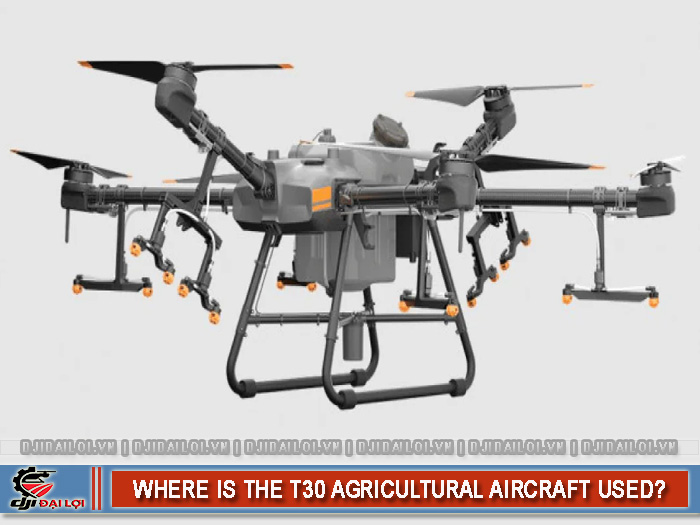
The DJI Agras T30 is a specialized agricultural spraying drone developed by DJI, designed to assist in crop spraying, fertilizer application, and seed spreading over large areas.
With a 30-liter tank, omnidirectional radar system, and automated flight control, the T30 helps farmers reduce labor costs, cut operational expenses, and enhance productivity through smart farming.
Key features of the DJI Agras T30:
The T30 represents an advanced technological solution bringing real-world value to farmers and agribusinesses.
It not only handles spraying and spreading tasks but also improves efficiency, reduces costs, and supports sustainable agriculture.
Using the T30 replaces much of the manual workforce. In just minutes, it can spray evenly over dozens of hectares, significantly shortening working time. This reduces labor costs while ensuring timely crop care and pest control.
Equipped with a high-pressure spray system and intelligent radar, the T30 distributes chemicals evenly over crops. This optimizes pesticide and fertilizer use, minimizing waste and overlapping spray areas.
By spraying remotely, the T30 reduces direct exposure to chemicals, safeguarding farmers’ health and lowering environmental contamination.
The T30 is effective not only for rice paddies but also for fruit trees, industrial crops, and vegetables. This flexibility enables farmers to maximize their investment with one multi-purpose device.
Perfect for sugarcane, coffee, rubber, and pepper farms. The T30 enables fast and uniform spraying of foliar fertilizer and pesticides, reducing loss compared to manual methods.
The fine mist system suits durian, mango, pomelo, and orange trees. The automatic radar adjusts flight altitude and pressure, ensuring precise spraying even in complex terrain.
|
Model |
Tank capacity |
Productivity |
Best for |
Approx. price |
|---|---|---|---|---|
|
DJI T10 |
10 L |
6–8 ha/day |
Small farms (<5 ha) |
~₫95,000,000 |
|
DJI T20P |
20 L |
20–25 ha/day |
Medium farms (5–15 ha) |
~₫219,000,000 |
|
30 L |
35–45 ha/day |
Cooperatives, >10 ha |
~₫229,000,000 |
|
|
DJI T40 |
40 L |
50–60 ha/day |
Large farms, multi-crop |
~₫239,000,000 |
According to the Vietnam Academy of Agricultural Sciences (VAAS) in Lam Dong, the T30 reduces pesticide use by 25–30% and increases yield by 8–12%.
This translates to roughly ₫15 million saved per month, allowing ROI within 6–10 months for farms over 3 ha.
At a mixed durian–coffee farm in Binh Thuan, the T30 sprayed 9.9 ha in just 2.5 days, outperforming manual methods, especially on sloped terrain.
→ In short: for operations over 10 ha or service businesses, the T30 is ideal. For smaller farms, a smaller-capacity model may be more economical.
|
Strengths |
Considerations |
|---|---|
|
High coverage and performance |
Higher investment cost than T10/T20P |
|
Advanced safety tech (IP67, radar 360°) |
Requires skilled operators and DJI software |
|
Durable and reliable |
Needs genuine parts and maintenance for best results |
Between ₫10–15 million/year, depending on usage and component replacements (propellers, batteries, nozzles).
Yes. With FPV cameras and mapping functions, it can inspect crop conditions and planting areas.
Usually 1–2 people-one pilot and one assistant for refilling batteries and liquid.
It remains stable in winds up to 8–10 m/s (Beaufort scale 4–5), though mild wind ensures optimal spraying.
Yes. Its modular design allows quick disassembly for cleaning and part replacement. Routine maintenance involves batteries, propellers, and nozzles.